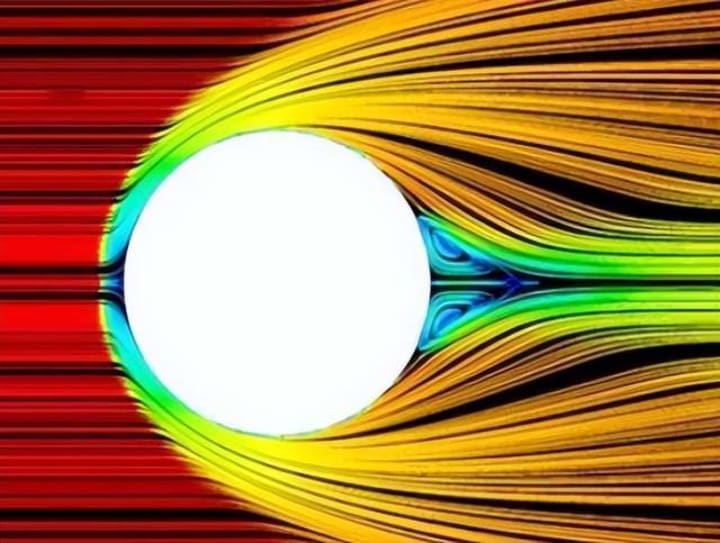In 1908, mankind was lucky to escape a disaster. Scientists: only 10 km short
The famous "Tungus Explosion"

The universe is full of all kinds of dangers, even on Earth, which is known as the "paradise of life", we still face threats from outer space, such as those in the solar system, "wandering around" asteroids, from time to time close to Earth, and If they hit the Earth, it may bring a disaster to mankind.
According to scientists' research, in 1908, there was an asteroid that formed a great threat to human beings, it was only 10 kilometers away from hitting the surface of the Earth, and human beings were lucky to escape a disaster, let's take a look at how this happened.
On June 30, 1908, in the central Siberian region of Russia near the Tungus River, a powerful explosion occurred, according to the description of the locals, they saw a huge fireball falling from the sky, the light it emitted is brighter than the midday sun, even if you close your eyes can feel its blinding light, a few minutes later, they felt the huge sound and impact.
The event is the famous "Tungus explosion", the relevant data show that the explosion destroyed more than 2100 square kilometers of about 80 million trees, although the center of the explosion is far away from human settlements, still led to a large number of human buildings with varying degrees of damage, the impact of the distance can reach 650 kilometers, and within 1000 kilometers, people can hear the explosion generated by the roar.
At first, scientists generally believe that this is a large-scale asteroid impact event, and speculate that in the "Tungus explosion" occurred in the region, there should be a giant crater, but the field survey results show that the area does not exist in the imaginary crater, so the event has become mysterious.
Various speculations have been made, such as the "comet impact hypothesis", "antimatter hypothesis", "white dwarf debris hypothesis", etc., and some even believe that the event is related to an alien civilization. However, these speculations are hardly reasonable to explain the "Tungus explosion".
In 2020, a scientific team from Russia's Siberian Federal University published a paper saying that the "Tungus explosion" should be caused by an asteroid, and the reason for not finding the crater In fact, the asteroid did not hit the surface of the Earth.
We know that the Earth is round, so when a fast enough asteroid breaks into the Earth's atmosphere at a small angle (relative to the Earth's surface), it may pass close to the Earth's surface and then return to outer space, the process can be simply described as: first it gets closer and closer to the Earth's surface, but when it reaches its lowest point, it gets farther and farther away from the Earth's surface, until it flies out of the atmosphere. until it flies out of the atmosphere.

It is worth noting that such a situation does not exist only in theory, because on August 10, 1972, an asteroid flyby event was observed, in which an asteroid broke into the Earth's atmosphere from above North America, and then kept approaching the Earth's surface, but at a distance of about 50 km from the Earth's surface, it flew higher and higher, and finally flew out of the Earth's atmosphere. s atmosphere.
So the question arises, if the asteroid did not hit the Earth's surface, then how did it cause the "Tungus explosion"? In fact, this is quite understandable.
In daily life, we often encounter such a phenomenon: if an object with a certain speed from our side, we can feel the airflow it brings up, the faster the object, the closer we are, the stronger we feel the airflow.
The same reason, the asteroid through the atmosphere, will also drive its surrounding gas with it, and in this process, the air in front of the asteroid will also be violently compressed and constantly warmed, if the speed of the asteroid is fast enough, the mass is large enough, then when it runs close enough to the Earth's surface on the location, its driven by the high temperature airflow will violently bombard the ground, and then cause the effect of the explosion.
That caused the "Tungus explosion" of the asteroid in the end what type, how big, and how fast? To figure out this series of questions, the team's scientists conducted a number of simulations using computer models.
The simulations show that the most likely scenario is that this is an iron asteroid at least 200 meters in diameter, with an angle of incidence of about 11 degrees, a speed between 20 and 25 kilometers per second, and its closest distance to the Earth's surface is about 10 kilometers. In other words, the asteroid was only 10 kilometers short of hitting the Earth's surface, and mankind was lucky to escape this calamity.
According to scientists' calculations, the power of the "Tungus explosion" is equivalent to about 15 million tons of TNT equivalent, which is about 1000 times the power of the Hiroshima atomic bomb. Accordingly, it is not difficult to imagine that an asteroid driven by high-temperature air currents are so powerful, if it directly hit the surface of the Earth, the consequences will be more terrible.
Well, that's all we have to say today, welcome to follow us, we will see you next time.
About the Creator
Carlo Phil
Science and art are two sides of a coin






Comments
There are no comments for this story
Be the first to respond and start the conversation.